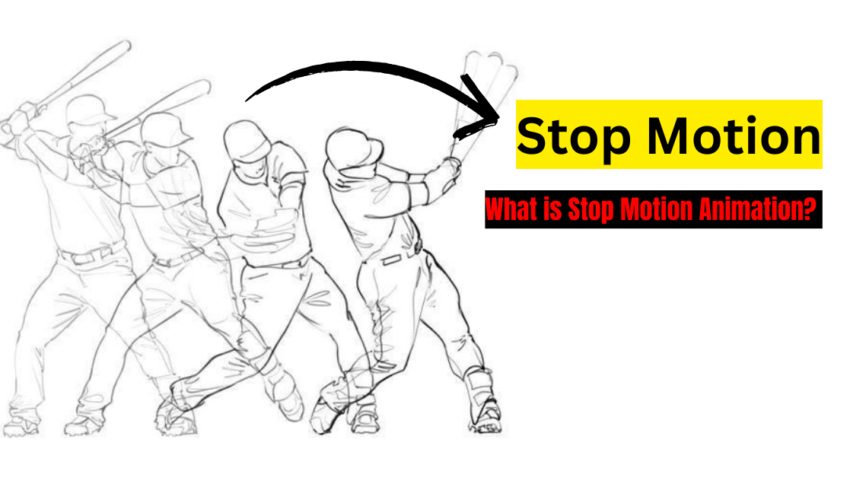
What is Stop Motion Animation? Art of Frame-by-Frame Magic
Stop Motion Animation introduction
Stop motion animation is a captivating technique that brings inanimate objects to life by capturing them frame by frame, with slight adjustments between each shot to create the illusion of movement. From classic films like The Nightmare Before Christmas to modern YouTube shorts, stop motion has a timeless charm that appeals to creators and audiences alike. This guide explores the essentials of stop motion, covering its history, techniques, tools, and tips for beginners, all in simple language to inspire your creative journey.
What is Stop Motion Animation?
Definition
Stop motion is an animation method where physical objects—such as clay figures, puppets, or everyday items—are moved incrementally and photographed one frame at a time. When these frames are played in sequence, the objects appear to move naturally.
How It Works
- Frame-by-Frame Capture: Each frame is a single photograph of the scene.
- Incremental Movement: Objects are adjusted slightly (e.g., moving an arm a millimeter) between shots.
- Playback: Frames are strung together at a specific rate (e.g., 24 frames per second) to create fluid motion.
Why Stop Motion Animation Unique
Unlike 2D or 3D digital animation, stop motion relies on tangible objects, giving it a tactile, handmade feel. This physicality makes every project visually distinct, perfect for storytelling with a personal touch.
History of Stop Motion Animation
Early Beginnings
Stop motion dates back to the late 19th century. One of the earliest examples is The Humpty Dumpty Circus (1898), where toys were animated to simulate movement. Pioneers like Albert E. Smith and J. Stuart Blackton used stop motion to create magical effects in early cinema.
Golden Age
In the 20th century, stop motion became a staple in films. Ray Harryhausen’s work in movies like Jason and the Argonauts (1963) showcased dynamic creature animations, blending stop motion with live-action. Willis O’Brien’s King Kong (1933) also set a benchmark for storytelling through stop motion.
Modern Era
Today, studios like Aardman Animations (Wallace and Gromit) and Laika (Coraline, Kubo and the Two Strings) have elevated stop motion to an art form. Meanwhile, affordable cameras and software have made it accessible to hobbyists, fueling a resurgence on platforms like YouTube and TikTok.
Types of Stop Motion Animation
Claymation
- Description: Uses malleable materials like plasticine or clay to create characters.
- Example: Wallace and Gromit, where characters’ expressions are reshaped for each frame.
- Pros: Flexible for expressive designs; easy to mold.
- Cons: Clay can deform under heat or prolonged handling.
Puppet Animation
- Description: Involves articulated puppets with movable joints or armatures.
- Example: The Nightmare Before Christmas, with detailed puppets.
- Pros: Durable and reusable; precise movements.
- Cons: Requires skilled craftsmanship to build.
Object Animation
- Description: Uses everyday objects like toys, paper, or household items.
- Example: PES’s short film Fresh Guacamole, animating kitchen items.
- Pros: Accessible and budget-friendly.
- Cons: Limited by object shapes and rigidity.
Cutout Animation
- Description: Flat, paper or card cutouts are moved and layered.
- Example: Early South Park episodes used cutout techniques.
- Pros: Simple and quick for 2D-like visuals.
- Cons: Limited depth and movement range.
Pixilation
- Description: Animates human actors by posing them for each frame.
- Example: Norman McLaren’s Neighbours (1952).
- Pros: Creates surreal, playful effects.
- Cons: Time-intensive for actors and crew.
Tools and Equipment for Stop Motion
Cameras
- DSLR/Mirrorless Cameras: Offer high-quality images (e.g., Canon EOS, Sony Alpha).
- Smartphones: Modern phones with manual settings work well for beginners.
- Webcams: Budget-friendly for testing.
Lighting
- Soft Lighting: Use diffused lights (e.g., LED panels) to avoid harsh shadows.
- Consistency: Keep lighting stable across frames to prevent flickering.
- Tip: Use desk lamps with adjustable arms for small setups.
Tripods and Mounts
- A sturdy tripod or phone mount ensures the camera stays fixed, preventing shaky footage.
- Overhead rigs are useful for top-down shots in object or cutout animation.
Software
- Stop Motion Studio: Beginner-friendly, available on mobile and desktop.
- Dragon frame: Industry standard for precise control and onion-skinning.
- Adobe Premiere/After Effects: For editing and post-production.
- Free Options: iMovie, DaVinci Resolve for basic editing.
Props and Sets
- Materials: Clay, wire, foam, fabric, or recycled items.
- Backgrounds: Cardboard, fabric, or printed images for simple sets.
- Tip: Use green screens for digital backgrounds in post-production.
The Stop Motion Process
Pre-Production
- Storyboarding: Sketch your scenes to plan shots and pacing.
- Scriptwriting: Write dialogue or narration if needed.
- Character/Set Design: Create or gather props, ensuring they’re movable.
- Animatic: Make a rough video of your storyboard with timing.
Production
- Setup: Arrange your set, camera, and lighting.
- Frame Rate: Choose 12–24 frames per second (FPS). Beginners should start with 12 FPS for simpler projects.
- Animation:
- Move objects slightly for each frame (e.g., 1–2 mm).
- Use onion-skinning (a software feature) to see previous frames for smooth transitions.
- Check for consistency in lighting and positioning.
- Test Shots: Review short sequences to catch errors early.
Post-Production
- Editing: Import frames into software to compile the video.
- Sound: Add music, voiceovers, or sound effects (e.g., via Audacity or Adobe Audition).
- Effects: Apply color grading or digital backgrounds if needed.
- Export: Save in MP4 or AVI for sharing online.
Tips for Beginners
Start Small
Begin with a 10–15 second project, like animating a bouncing ball or a walking toy. Short projects help you learn without feeling overwhelmed.
Plan Thoroughly
A detailed storyboard saves time during production. Know your story’s beginning, middle, and end before animating.
Keep It Stable
Secure your camera and set to avoid accidental bumps. Even slight shifts can ruin a sequence.
Experiment with Materials
Try different objects—paper, clay, or LEGO—to discover what suits your style. Everyday items can yield creative results.
Practice Patience
Stop motion is time-intensive. A 30-second clip at 12 FPS requires 360 frames, each needing careful adjustment. Take breaks to stay focused.
Learn from Others
Watch tutorials on YouTube or study films by Aardman or Laika. Analyze how they handle movement and expressions.
Challenges in Stop Motion
Time-Consuming
Animating even a minute of footage can take hours or days due to the frame-by-frame process.
Technical Issues
- Flickering: Caused by inconsistent lighting or camera settings.
- Continuity Errors: Objects may shift unintentionally between frames.
- Solution: Use manual camera settings and lock exposure/focus.
Material Limitations
Clay can soften, puppets may break, and objects may not move as desired. Test materials beforehand to ensure durability.
Learning Curve
Mastering smooth motion and storytelling takes practice. Start with simple movements before tackling complex scenes.
Why Choose Stop Motion?
Creative Freedom
Stop motion allows endless experimentation with materials, styles, and stories, making it ideal for unique projects.
Accessibility
You don’t need expensive tools. A smartphone, desk lamp, and household items can produce impressive results.
Timeless Appeal
The tactile quality of stop motion resonates with audiences, offering a refreshing contrast to sleek digital animation.
Community and Sharing
Platforms like Instagram and TikTok are perfect for showcasing short stop motion clips, connecting you with a global community of creators.
Conclusion
Stop motion animation is a rewarding craft that combines creativity, patience, and technical skill. Whether you’re animating clay creatures, paper cutouts, or everyday objects, the process is accessible to beginners yet offers depth for seasoned artists. By understanding its history, types, tools, and techniques, you can start your own projects with confidence. Grab a camera, gather some props, and bring your imagination to life—one frame at a time.













Leave a Reply